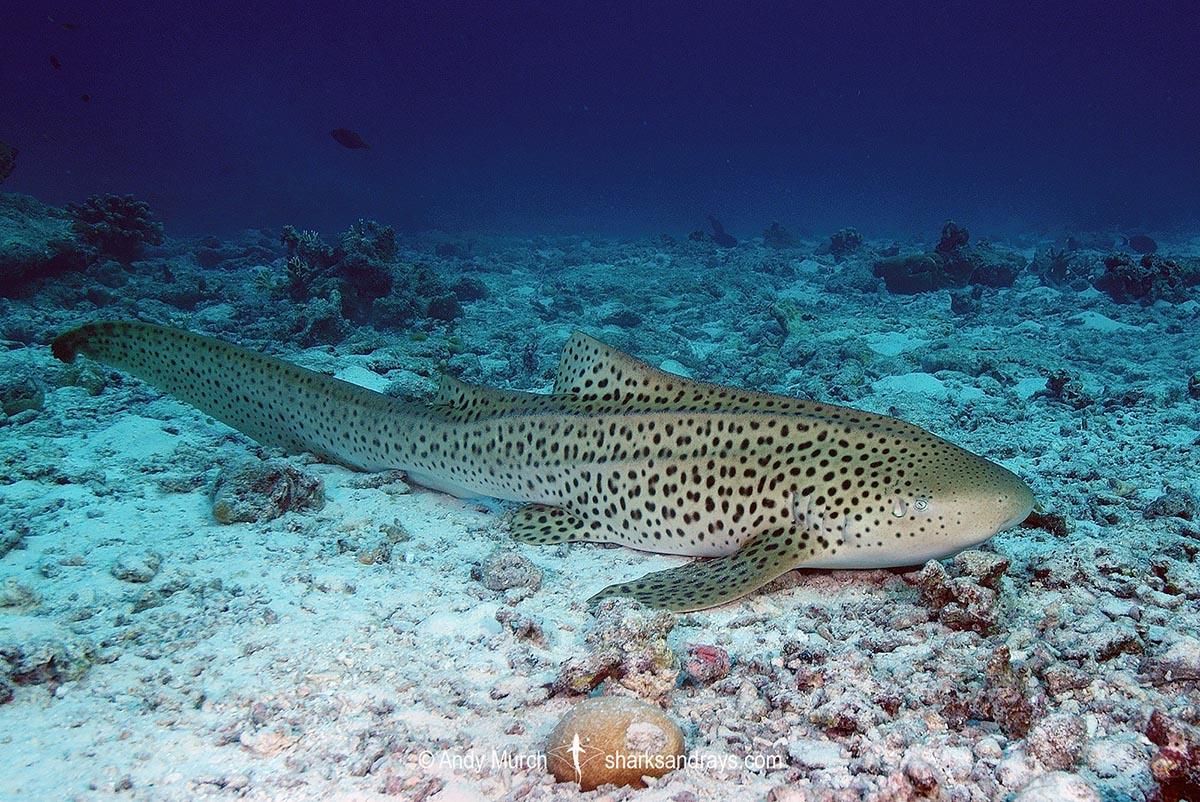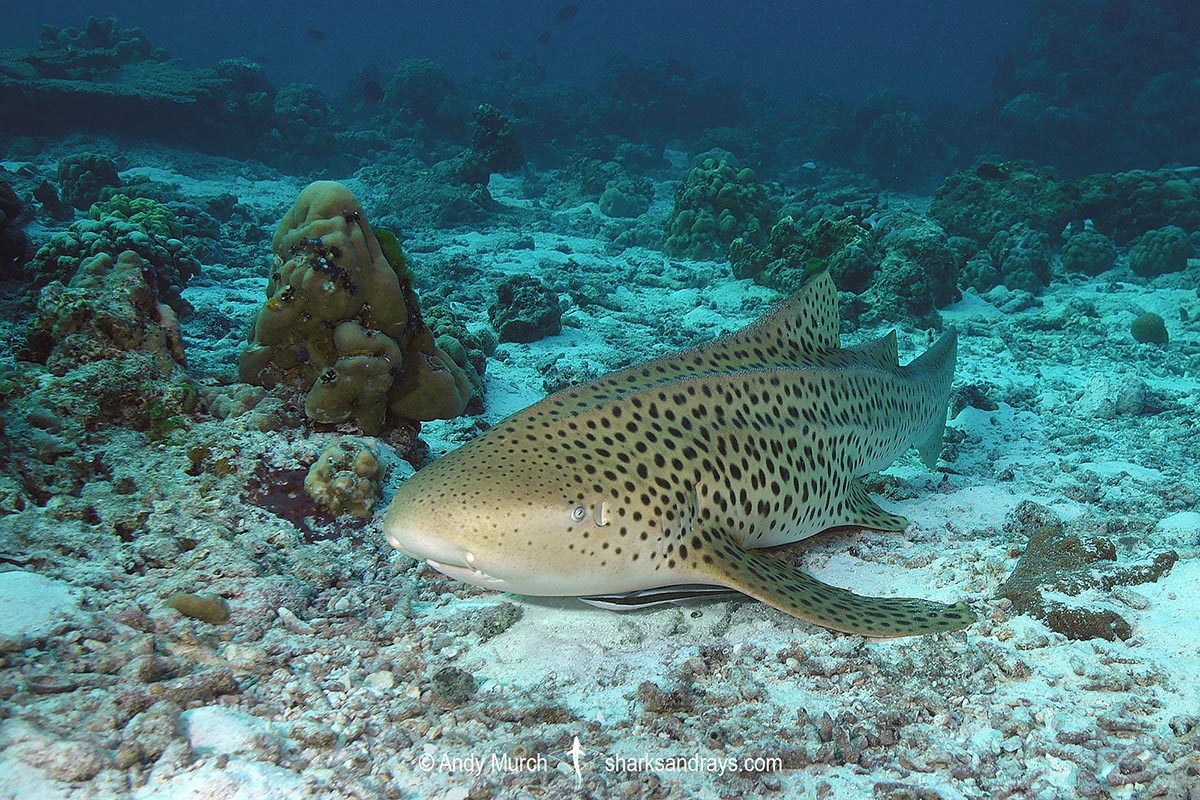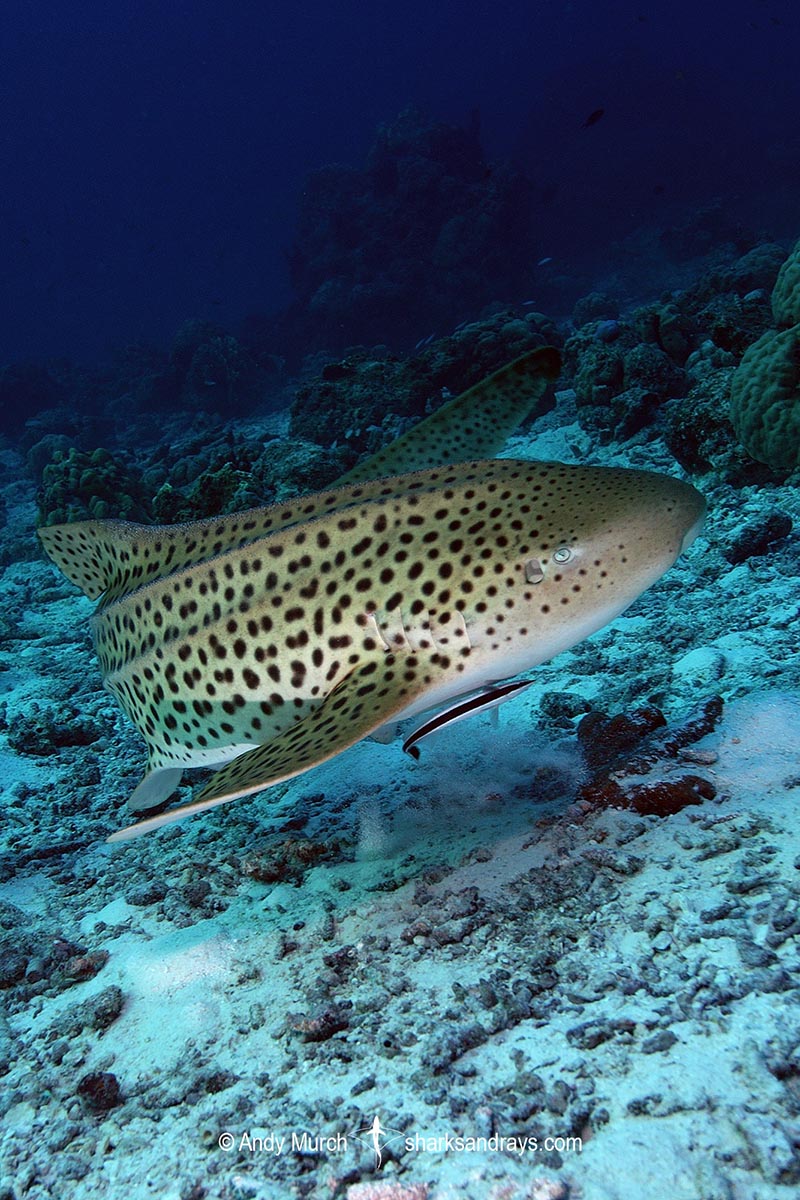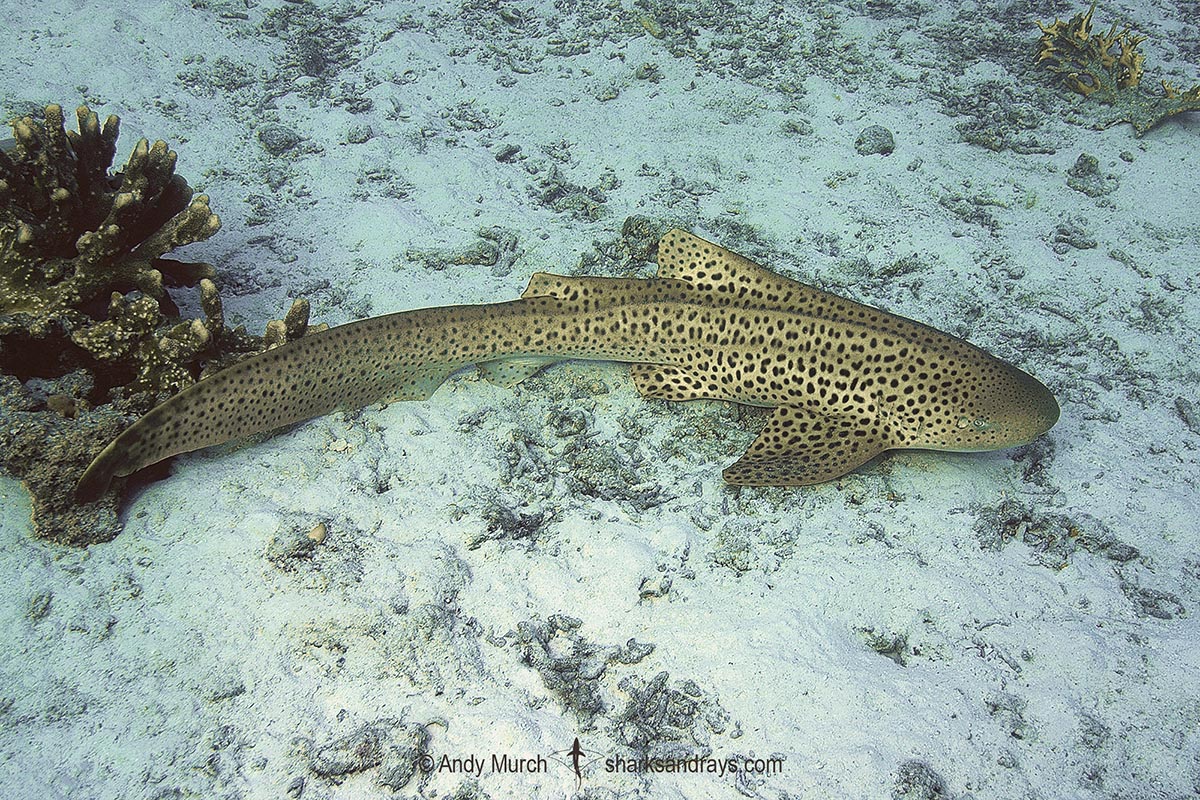Common names
Zebra Shark, Leopard Shark, Indo-Pacific Leopard Shark.
Binomial
Stegostoma tigrinum.
Synonyms
Scyllia quinquecornuatum, Scyllium heptagonum, Squalus cirrosus, Squalus fasciatus, Squalus longicaudus, Squalus pantherinus, Squalus tigrinus, Squalus tygrinus, Squalus varius, Stegastoma fasciatum, Stegastoma varium, Stegostoma carinatum, Stegostoma fasciata, Stegostoma fasciatum, Stegostoma fasciaturn, Stegostoma fasciatus, Stegostoma tigrinum naucum, Stegostoma tigrinurn, Stegostoma tigrinus, Stegostoma varium, Stegostoma varium, Stegostoma varius.
Identification
A large species of shark with a rounded snout shorter than mouth width. First and second dorsal fins long and low; length 2-3 x height. Free rear tip of first dorsal overlaps second dorsal origin. First dorsal origin posterior to free rear tip of pectoral fin. Pectoral fins large with rounded tips. Caudal fin extremely long; almost half total length.
Dorsal coloration olive, yellow, or beige with many small black spots. Ventrum pale. Juveniles have black or brown vertical (zebra-like) stripes on a cream or yellow background. Stripes eventually break up into spots.
Size
Maximum verified length 246cm. Size at birth approximately 20-36cm.

Conservation Status
ENDANGERED
The Zebra Shark (Stegostoma tigrinum) is caught in demersal trawls, gillnets and hook and line fisheries. Although wide ranging, it is restricted to a narrow strip of inshore reef and sand that is heavily fished throughout its range except in Australia. The sub-population in Southeast East (Thailand to Indonesia) has been reduced by ~50% since the 1970s. The sub-population in eastern Indonesia has seen smaller declines. In Australia, the zebra shark remains relatively abundant in some areas and is assessed at ‘Least Concern’ regionally.

Habitat
Warm-temperate and tropical seas. Found on sand around coral reefs and slopes adjacent to reefs. Intertidal to at least 62m. Paucity of sightings of striped young indicates that they inhabit deeper water and likely secretive.
Distribution
The zebra shark is found throughout the Indian Ocean, Red Sea, Persian Gulf, and the western Pacific.
Reproduction
Oviparous. Captive animals have laid 40-80 egg cases per year. However, only 25% of egg cases successfully hatched.
Diet
The zebra shark mostly feeds on mollusks and crustaceans, plus bony fishes and possibly sea snakes.
Behavior
Often seen resting on the sand next to reefs. Usually solitary but sometimes forms aggregations (e.g. in Byron Bay, Australia). Wriggles into tight openings on the reef in search of prey.
Zebra sharks undergo extensive annual migrations of up to 2000km along the coast of Australia.
Reaction to divers
Quite easy to approach. Remains at rest unless closely harassed.
Diving logistics
While diving at the Similan Islands in Thailand in the 1990’s, I encountered zebra sharks on virtually every dive. Over the last two decades, their numbers have slowly decreased to the point where they are seldom seen in Thailand anymore.
Fortunately, zebra sharks are still abundant along the coast of Australia. They can be seen almost anywhere in Queensland and far northern NSW, but the best area seems to be from Gladstone to Coffs Harbour, with virtually guaranteed sightings during the summer at Rainbow Beach, Brisbane, Tweed Heads, and Byron Bay.
Zebra sharks are also seen by divers (in less numbers) off the east coast of Africa, from Egypt all the way down to Sodwana Bay in South Africa.
What’s new
View our full list of updates
Similar species
No other sharks closely resemble the zebra shark.


